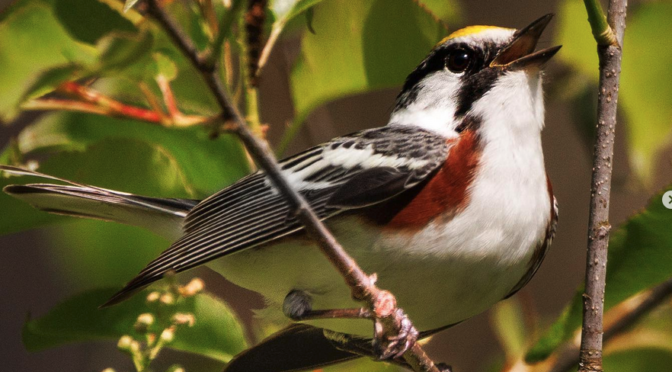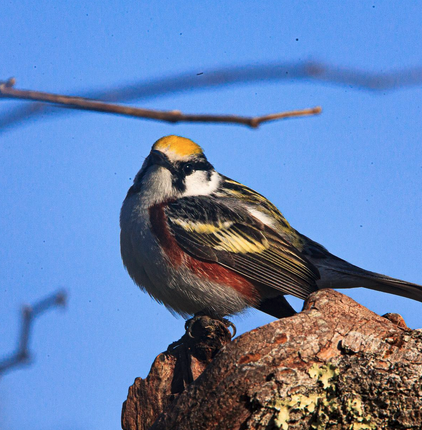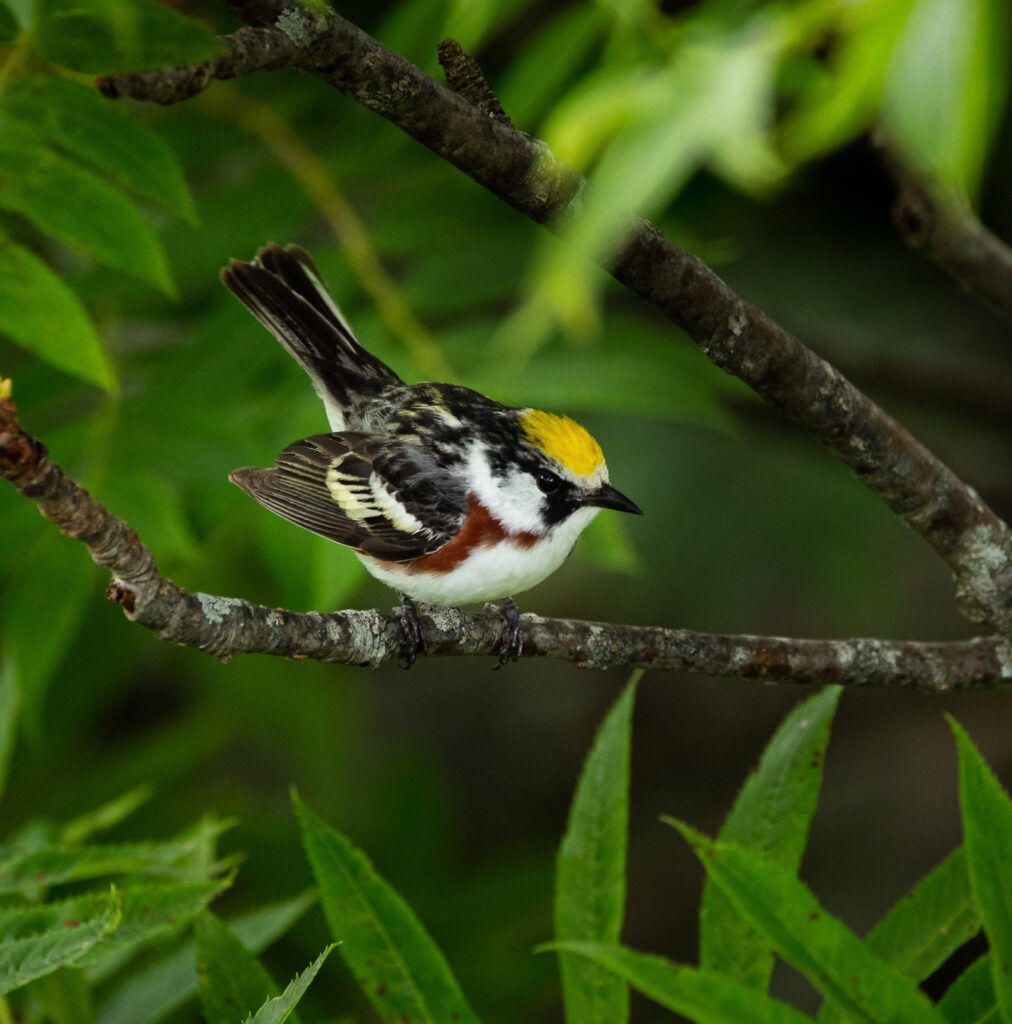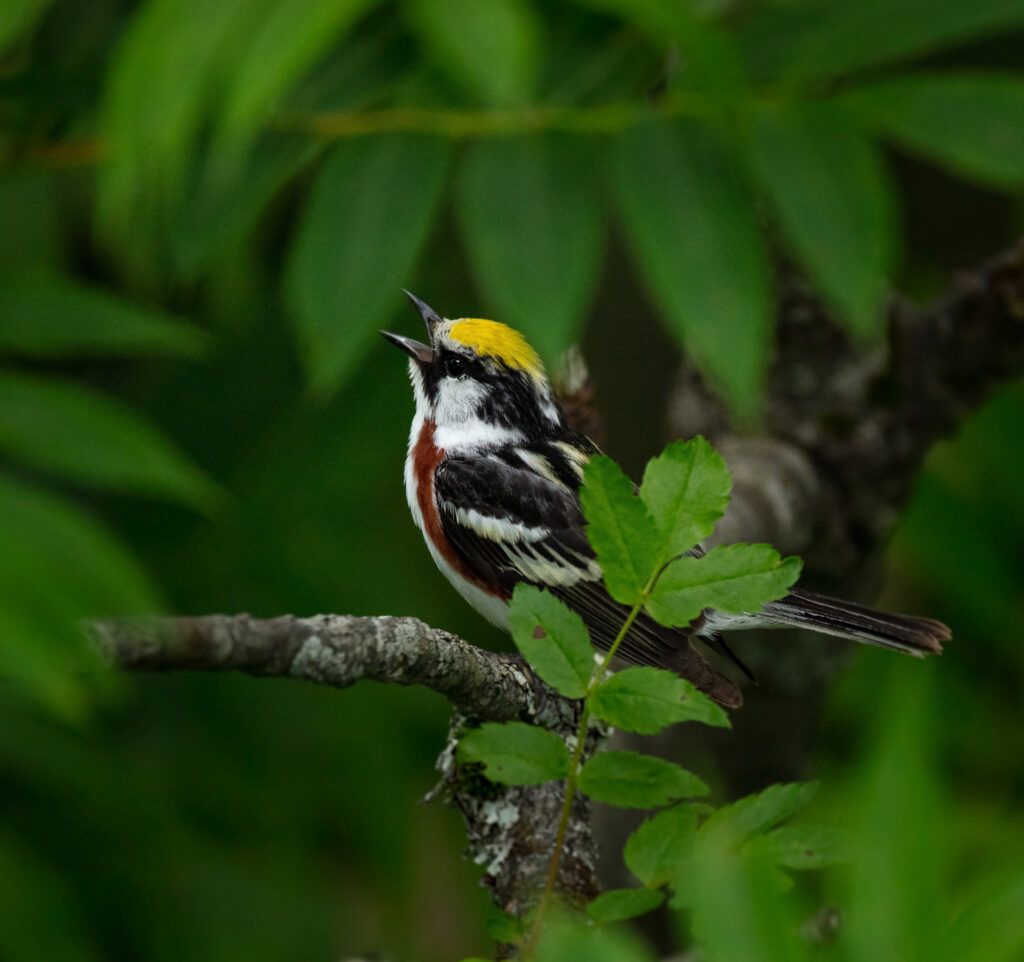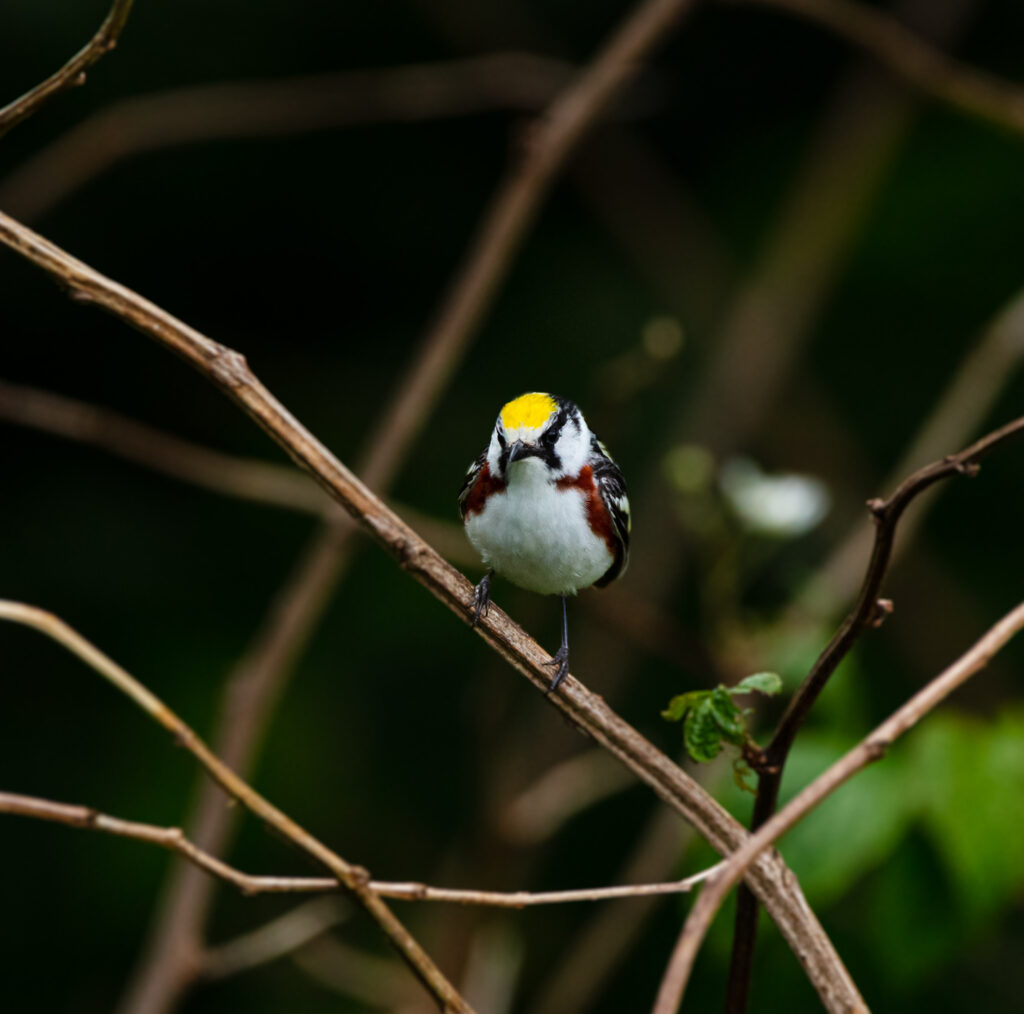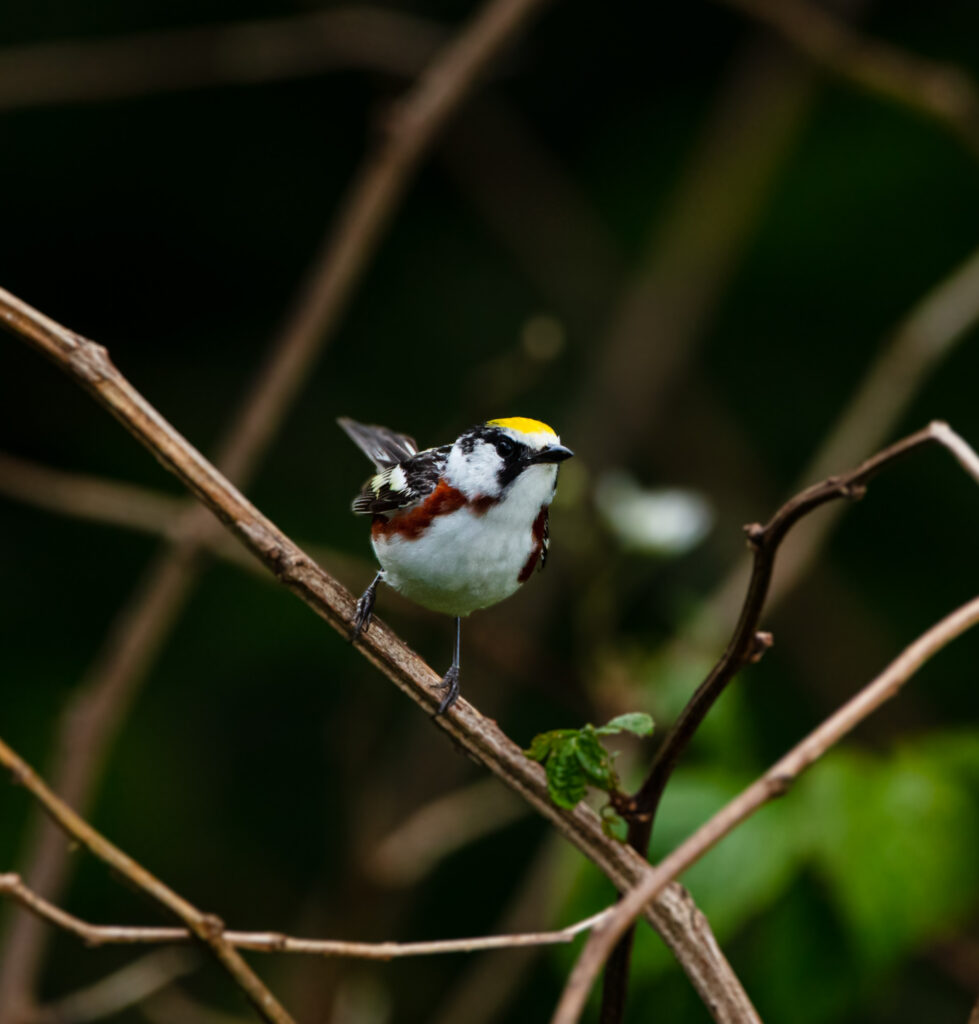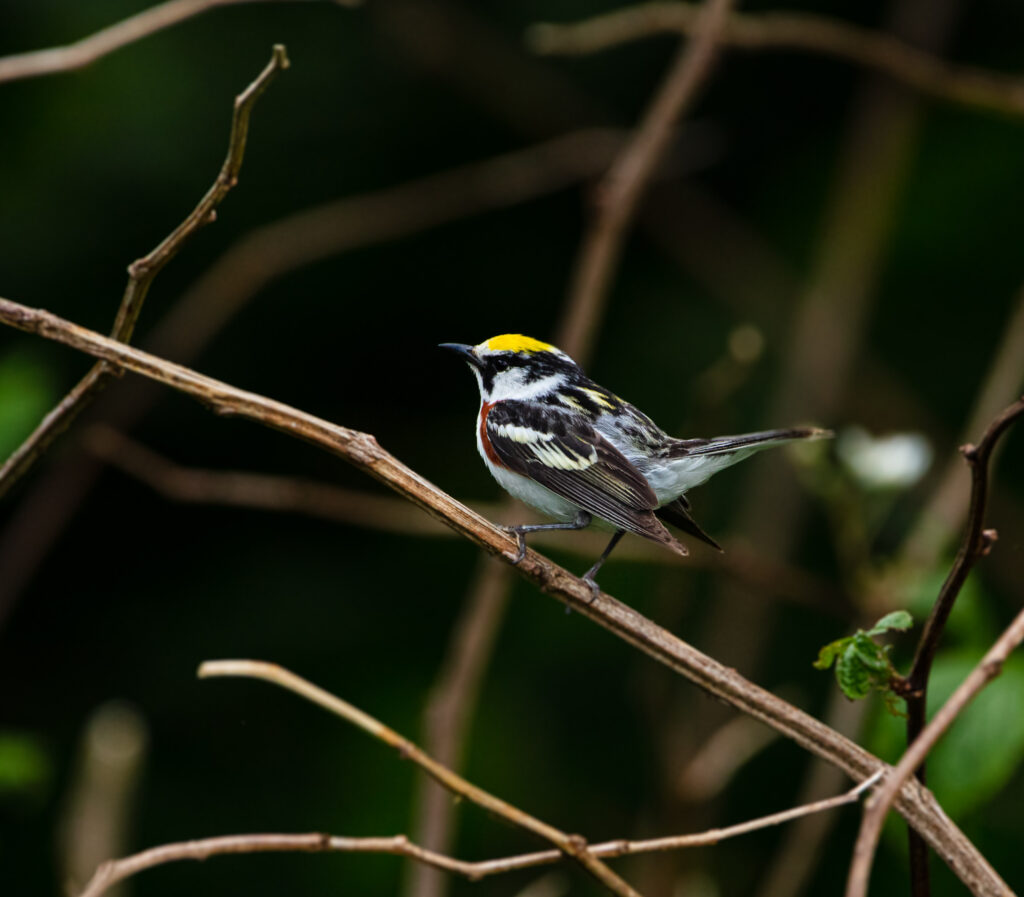One of the coolest birds to see in the mountains of western North Carolina is the Chestnut-sided Warbler.
I spotted this little guy singing on a sunny wildflower covered slope last Sunday morning while birding at the Bass Lake Trail in Blowing Rock NC.
Like their neighbor the Canada Warbler, they’re quite curious about people and will fly in quite close to see what we are doing. I had no trouble at all trying to get a good look at this one as he foraged in the brush after tiny insects.
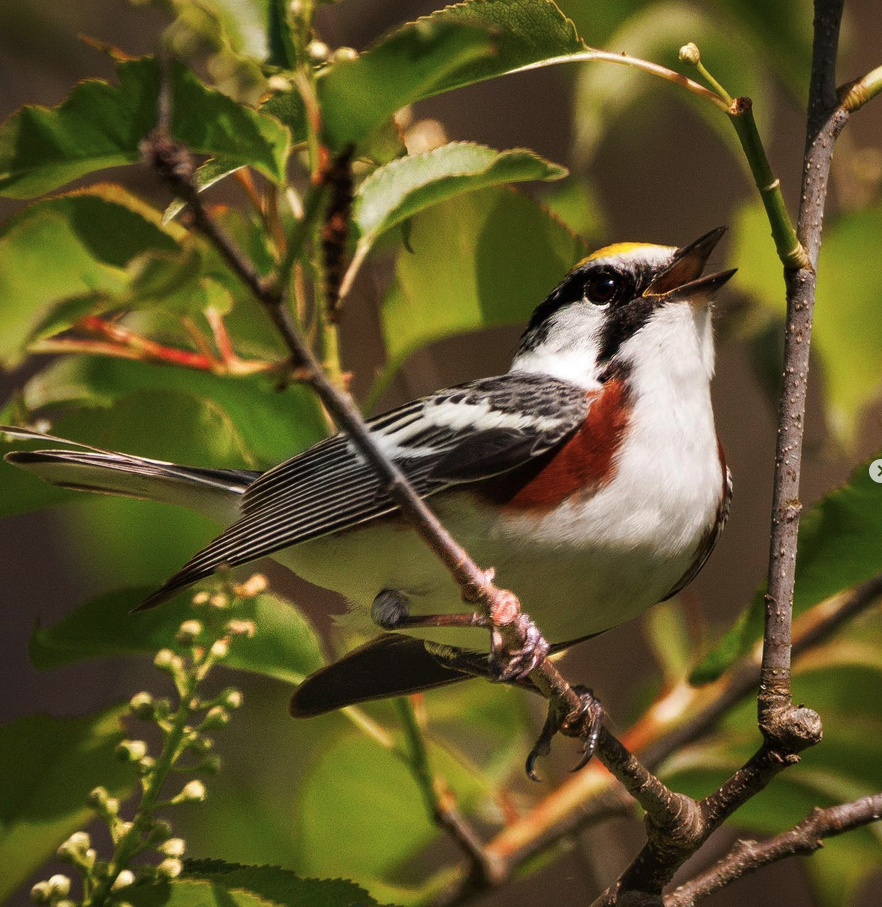
Chestnut-sided Warblers hunt for food by flitting between branches of shrubs and small trees, finding their six legged prey among leaves and twigs. Every now and again they’ll dart out of the brush to catch flying insects in midair. When they’re not looking for a snack you can find them singing loudly in the thickets, sending messages warning others to stay out of their territories or to attract a mate.
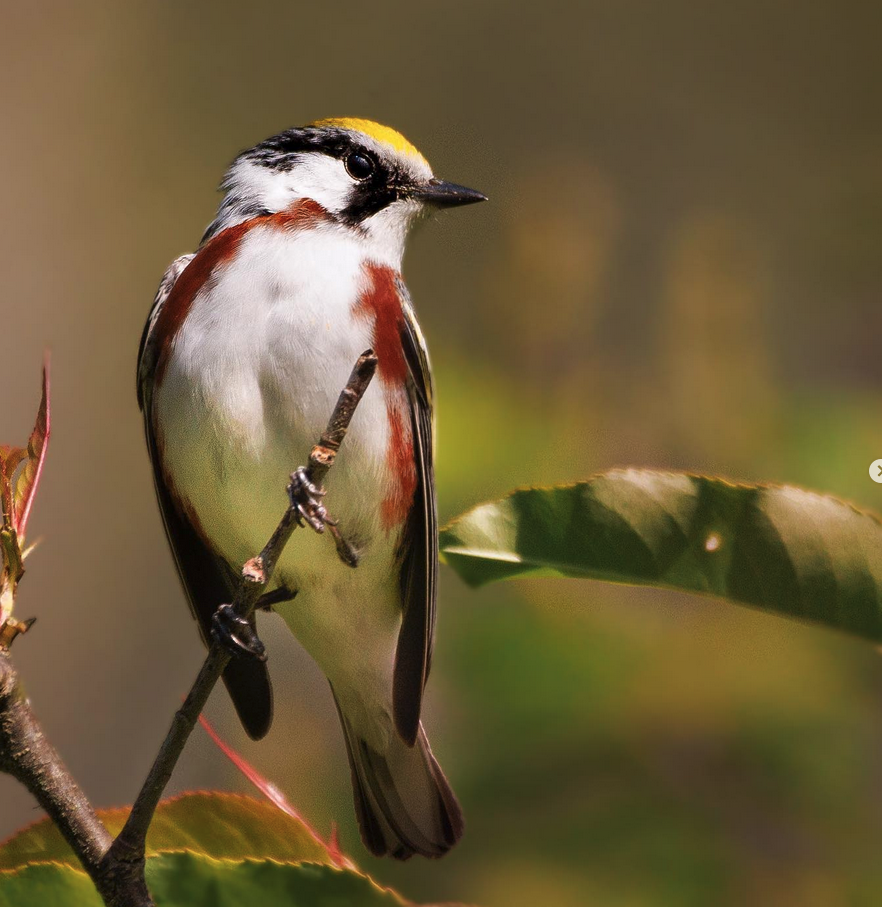


Primarily Chestnuts tend to nest to the north in New England however their breeding range does extend south down the narrow spine of the Appalachian mountains. They hide their nests low in dense shrubs, blackberry tangles, rhododendron stands, or even in young saplings of alder, maple, and other hardwood shrubs and trees.
They are commonly found between 3500-5000 feet along the Blue Ridge Parkway throughout May and June and will stick around until the first week of October before migrating south to Central America to spend the winter. You’ve still got plenty time to go see them this year so get out there if you can!
Photos by @sally_siko of @bestlife_birding on my mighty mirrorless monster, the @canonusa #R5

